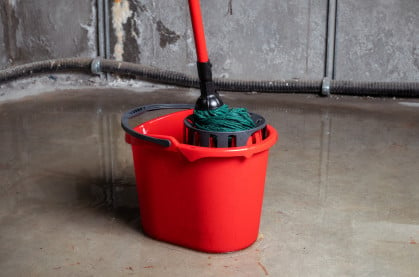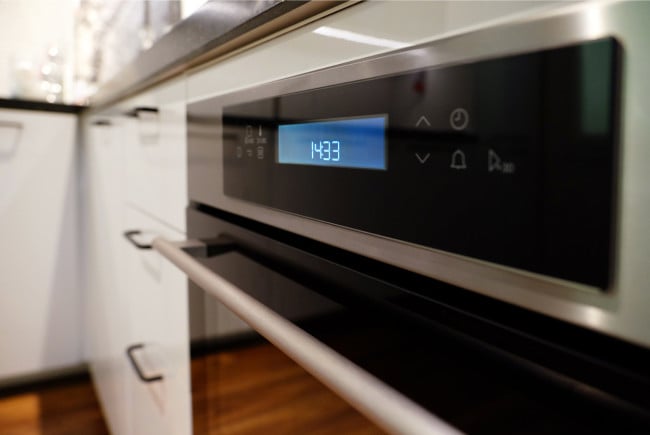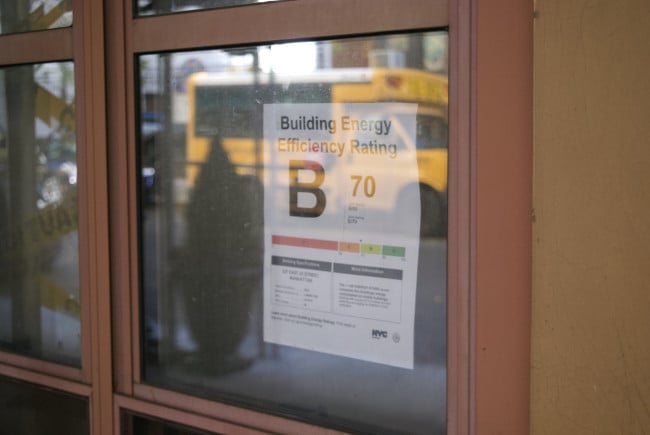- One strategy is to manage the overflow with drains and sump pumps
- A chemical grout injection prevents water from entering but it is costly

Water from rivers can have much higher pressure than other sources of flooding.
Petra Richli via Getty Images
If your building sits on one of New York City's underground rivers and streams, you are likely to experience flooding in the basement—even if it only happens intermittently. A dry basement is always the goal for both health reasons (to avoid mold and mildew) and for structural integrity, especially since water from rivers can have much higher pressure than other sources of flooding.
[Editor's note: This is part two of a three-part series. Part one addresses how to find out if your building sits on top of an underground stream. Part three explains what insurance covers.]
Bill Payne, founder of Payne Engineering, a structural engineering firm specializing in restorations and water intrusions, says there are lots of ways to deal with all kinds of moisture intrusion, including when it caused by underground streams. He points to two strategies that you can take: You can prevent the water from coming in or you can manage the water that's coming in, and usually you do a little of both.
"It's hard to have a 100 percent effective solution post-construction compared to doing it pre-construction," he says. (Word to developers: Check the Viele map to see if there's a river winding its way underneath your property before breaking ground.)
Read on for ways to implement both of those strategies in your own building.
Managing water that gets inside
This may involve using different types of drains, namely French drains or trench drains in combination with sump pumps, which are a must in any NYC building.
Margie Russell, executive director of the New York Association of Realty Managers, says London Terrace Towers (completed in 1930) had flooding from an underground river when she managed the building in 1980s and '90s—and the situation continues today according to her sources. Another building (whose name she cannot recall) had a similar issue.
"Every time it rained, water was coming up from one of these streams. We would just tiptoe around the French drains whenever the flooding happened," she says.
Daniel Wollman, CEO of Gumley Haft, a NYC property management firm specializing in board clientele, employed a similar solution in two buildings that experienced flooding from submerged streams: They chipped away at the existing concrete flooring to create a "diversion track" or channel for the water to run through to the sump pump "like a little stream." If the sump pump is too far away, you might need to add a second sump pump, but we didn't have to do that in either case, he says.
But in some cases, the amount of water exceeds those methods and you're facing a more serious issue. Jeffrey Gross, regional vice president of First Onsite, a full-service restoration company, says he has dealt with a couple of jobs where flooding was from an underground river—one on Broadway near Park Row in Downtown Manhattan and another on Queens Boulevard in Rego Park.
How he approached drying them out depended on a few factors, including the amount of water, which varied from several inches to a few feet of standing water. "Some examples of what we did included when the water influx outpaced their existing system and we were able to do water extraction and drying but in a case where the power went out and there was no backup generator, we ended up pumping out feet of water and doing a much larger-scale demolition," he says.
Preventing the water from entering the basement
But prevention is likely to be your best bet. For that, Payne says the answer is to inject chemical grout through the foundation wall to stop the water from coming in. Unlike natural grout, this substance is made up of acrylics, urethanes, and other materials that react with water and come in two classes: hydrophilic for when the condition is wet and dry and hydrophobic for when it's constantly wet.
"There's an art and science to the application in having the strategy match the conditions. For example, you can inject it into cracks or create a sort of curtain behind the wall," he says.
According to Payne, the process is very expensive—chemical grouts cost about $350 per gallon and you may need many gallons to seal an entire foundation. Plus you need skilled engineers to do the work. And because water pressure from underground streams can erode the chemical grout over time, it may need to be repeated, depending on the situation.
Marat Olfir, resident manager of The Future Condominium in Kip's Bay who discovered the source of his building's periodic flooding was due to a buried stream under the building, credits chemical grout injection with stemming seasonal flooding from its buried stream—he says the engineers drilled 45 degrees a few inches deep into the concrete and filled it with this waterproofing material.
"We have lots of underground water and this was the only way to protect the building's shell," Olfir says. They used this to seal the bike room, storage area, and electrical room in the basement as well as the entire elevator pit, which is about 15 feet below the basement level, where they also installed a second sump pump. "The regular sump pump was always running (and then breaking) even though we couldn't see any water, and now we know why."
When you don't know for sure the source of flooding
Andras Joo, head of department/owner's representation and alternations for New Bedford Management, which works with co-ops and condos on construction capital projects, renovations, and restorations, says he is not aware of any flooding from underground rivers—or any flooding other than after big storms like Hurricane Irma.
But his recommendation is the same for all buildings: "Mostly you want to make sure the basement is thoroughly waterproofed by having proper drainage with good backflow, sump pumps, sealant all around, and a system in place (usually extra sump pumps) for occasional water coming in and emergencies." That's sound advice for any building to follow.
You Might Also Like
Sign Up for our Boards & Buildings Newsletter (Coming Soon!)
Thank you for your interest in our newsletter. You have been successfully added to our mailing list and will receive it when it becomes available.























